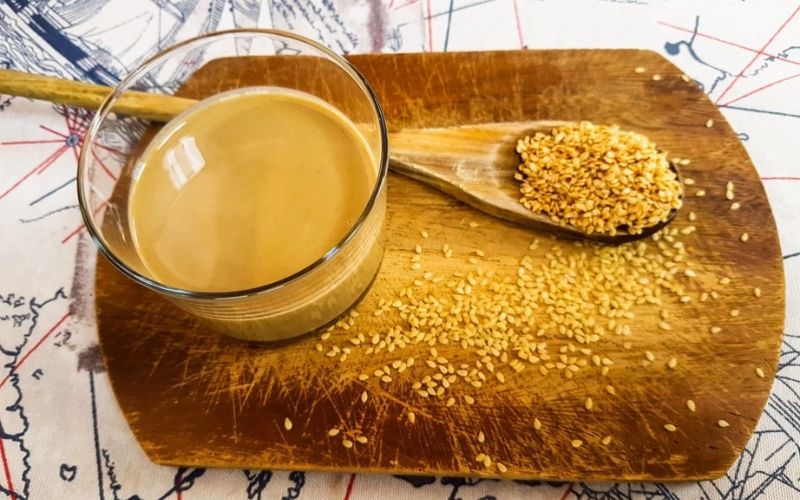It can feel like an adventure in the world of veganism to hunt down appropriate items that work with a plant-based diet. Tahini, a condiment derived from ground sesame seeds, is often the star of these culinary adventures. The big debate, though, is whether or not tahini is indeed vegan. This article will delve into the details of tahini, covering its history, nutritional profile, and its many vegan and non-vegan applications. So, whether you’re a die-hard vegan or just looking to broaden your culinary horizons, read on as we reveal all that you need to know about tahini.
Is Tahini a True Vegan Ingredient?
In its purest form, tahini is 100% vegan. Tahini, made only from sesame seeds, is a mainstay in vegan kitchens because it does not contain any ingredients or ingredients produced from animals. The sesame seeds are ground and their natural oils are extracted to make a paste that is both nutty and decadent. Without the use of any animals, these seeds alone are responsible for the dish’s luxurious consistency and hearty flavor.
Nutritional Bonanza in Every Scoop
Tahini is an excellent complement to any diet not only because it is vegan but also because of the wealth of nutrients it contains. Tahini is a delicious and nutritious addition to any meal since it contains heart-healthy fats, plant-based protein, and a wide variety of vitamins and minerals. The high calcium level is a notable quality, as it is essential for bone health and for people who choose to avoid dairy.
Versatility that Transcends Dietary Choices
Tahini’s adaptability isn’t limited to the vegan community. This multipurpose creamy marvel is much sought after in a wide range of cuisines due to its versatility. Dressings, dips, and sauces can benefit greatly from its creamy consistency and nutty flavor. The possibilities are endless, whether you’re making classic hummus or trying out a new vinaigrette using tahini.
Using Tahini into Vegan Dishes
Tahini is more than just a condiment for vegans; it’s a nutritional and flavor enhancer that may be used in place of animal products. A dairy-free salad dressing base, a protein-rich ingredient in energy bars, or a luscious topping for roasted veggies may all be made with tahini. Its versatility as a flavor enhancer and ability to blend in with other ingredients make it a must-have for vegan cooks.
Using Tahini into Non-Vegan Dishes
The magical properties of tahini aren’t limited to the vegan world. Even people who aren’t vegan can use it to make tasty food that won’t leave them hungry. Tahini’s usefulness in a variety of cuisines is demonstrated by the fact that it can be added to everything from yogurt-based sauces for grilled meats to baked products like cookies and cakes.
Methods for Choosing and Preserving Tahini
Tahini, like any other ingredient, is only as good as its quality. Choose brands that employ only natural ingredients like sesame seeds. Keep your tahini in the fridge or a cool, dark cupboard to extend its shelf life and preserve its healthy oils. It’s normal for there to be some separation, so just give it a nice stir before you use it.
Final Verdict
Is tahini then, an authentic vegan item? Yes. However, that’s not all it means. Tahini defies categorization as a “health food,” serving as an ingredient in everything from salad dressing to the main attraction in hummus bowls. It’s a favorite in vegan and non-vegan kitchens alike thanks to its high nutritional value and wide range of possible uses in cooking. Don’t be afraid to experiment with the many flavors this creamy treat brings to the table in your upcoming culinary endeavors.

